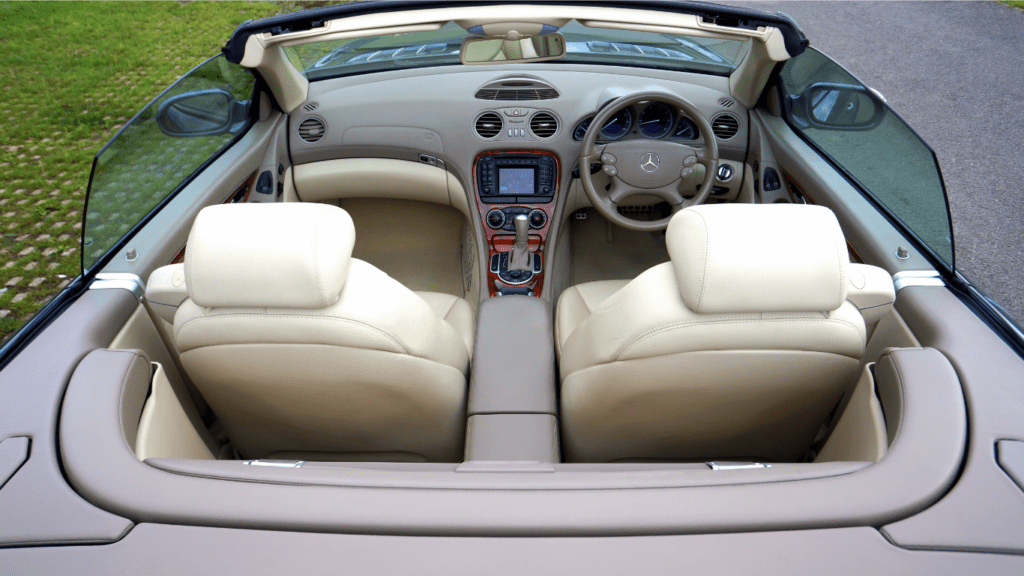Understanding Your Financial Situation
- Evaluate Income and Expenses
Start by assessing monthly income and expenses. Include all sources of income such as salary, investments, and side gigs. List fixed expenses like rent or mortgage, utilities, and insurance. Add variable expenses such as groceries, entertainment, and dining out. This overview clarifies how much disposable income is available.
- Calculate Debt-to-Income Ratio
Calculate your debt-to-income ratio (DTI) to understand debt levels in relation to income. Divide monthly debt payments by gross monthly income and multiply by 100. For instance, if total debt payments are $1,500 and gross income is $5,000, the DTI ratio is 30%. Aim for a DTI below 36% for optimal loan approval chances.
- Check Credit Score
Check your credit score through a reliable credit bureau. A credit score above 700 often results in better financing terms. Ensure accuracy and dispute inaccuracies. Higher scores typically mean lower interest rates, which reduce overall loan costs.
- Set a Budget
Set a realistic budget for purchasing the luxury car. Include down payment, monthly payments, insurance, maintenance, and parking. Consider setting aside an emergency fund. This budget helps avoid overextending finances and ensures sustainable car ownership.
- Determine Financing Needs
Determine the amount needed to finance. Subtract the down payment from the car’s total cost. This result is the loan amount required. Use this figure to explore financing options that suit your financial situation.
- Assess Available Savings
Assess available savings for a down payment. Larger down payments often lead to lower monthly payments and better loan terms. Ensure the down payment doesn’t deplete emergency savings. Responsible budgeting prioritizes financial stability.
- Prepare for Unexpected Expenses
Prepare for unexpected expenses related to car ownership. Factor in potential repairs, tire replacements, and higher fuel costs. Having a buffer ensures you’re ready for surprises without financial stress.
- Comparing Total Loan Costs
Compare total loan costs, including interest and fees. Calculate the total cost over the loan term to understand the full financial impact. This comparison helps in selecting the most cost-effective financing option.
Setting a Budget

There’s more to buying a luxury car than the sticker price. Setting a budget keeps you from overspending and helps manage other financial commitments.
Assessing Your Income and Expenses
You should first review your income and expenses. Start by listing all your income sources, including salary, bonuses, and side earnings. Total these amounts to see your monthly inflow.
Next, categorize your expenses. Fixed expenses include rent, mortgage payments, and insurance premiums. Variable expenses cover groceries, utilities, and entertainment. Tally these costs to reveal your monthly outflow. Subtract your expenses from your income. If there’s a surplus, this could be potential money for your car budget. Deficits indicate a need for expense reduction or increased income.
Determining the Down Payment
A large down payment affects your loan terms favorably. Begin by evaluating your current savings. Savings can include checking accounts, savings accounts, or liquid assets.
Financial advisors often recommend putting down at least 20% of the car’s purchase price. For instance, if the car costs $80,000, the down payment should be around $16,000. This reduces your loan amount and saves on interest.
Consider the trade-in value of an existing vehicle. If you plan to trade in your current car, its value can contribute to the down payment. Check online valuation tools or consult dealerships for an accurate estimate.
Considering Monthly Payments
Estimate your monthly loan payments before committing. Use online loan calculators for precise figures. Input the loan amount (price minus down payment), interest rate, and loan term to get monthly payment estimates.
Remember, experts recommend monthly car payments not exceed 15% of your monthly income. If your income is $5,000, keep car payments under $750. This ensures you maintain financial health while enjoying your new luxury car.
Review all ongoing costs beyond the loan, including:
- insurance
- maintenance
- fuel
Anticipate higher insurance premiums for luxury cars. Factor these into your monthly budget to avoid unexpected financial strain.
Exploring Financing Options
When considering how to finance your dream luxury car, it’s crucial to explore various financing options. Each method offers unique advantages and constraints.
Traditional Auto Loans
Traditional auto loans involve borrowing a set amount of money from a bank or credit union to purchase a vehicle. These loans usually have fixed terms ranging from 36 to 72 months, with interest rates varying based on credit scores. A higher credit score often results in lower interest rates. Many buyers prefer this straightforward financing method due to its predictability in monthly payments and ownership at the end of the term.
Lease Agreements
Lease agreements provide an alternative to traditional loans. Instead of buying the car outright, you’ll pay a monthly fee to use it for a specified term, typically 24 or 36 months. Leasing often requires a lower down payment and results in lower monthly payments than purchasing. However, you do not own the car at the lease’s end unless you choose to buy it, which involves a lump sum payment called the residual value. Leasing is ideal if you prefer driving new models and don’t mind mileage limits or potential wear-and-tear charges.
Refinancing Opportunities
Refinancing opportunities allow you to renegotiate your current auto loan to secure better interest rates or terms. This can reduce monthly payments or shorten the loan duration, depending on your financial goals. Refinancing is particularly useful if your credit score has improved or if market interest rates have dropped since you originally financed the vehicle. To take advantage of refinancing, ensure the potential savings outweigh any fees associated with the new loan.
Exploring these financing options allows you to make informed decisions, aligning your choice with your financial situation and automotive preferences.
Improving Your Credit Score
A good credit score is essential for securing favorable financing terms when buying a luxury car. Here’s how to enhance your credit score effectively.
Checking Your Credit Report
Start by reviewing your credit report thoroughly. Obtain a free copy from each of the three major credit bureaus—Equifax, Experian, and TransUnion—at AnnualCreditReport.com. Look for inaccuracies, such as incorrect account information or fraudulent activities, and dispute those errors promptly. Regular monitoring helps identify areas needing improvement and ensures your score reflects accurate information.
Paying Down Existing Debt
Reduce your existing debt to boost your credit score. Prioritize high-interest debt to minimize overall financial burden. Focus on lowering your credit utilization ratio—the amount of debt you owe relative to your credit limit. Aim to keep this ratio below 30% for each credit card. Paying more than the minimum payment on credit cards accelerates debt repayment and positively impacts your credit score.
Avoiding New Debt
Avoid taking on new debt while preparing to finance your luxury car. Opening new credit accounts can lead to hard inquiries on your report, which may lower your score temporarily. Focus on managing existing credit responsibly. Avoid large purchases leading up to your car loan application. Maintain financial stability to present yourself as a reliable borrower.
Saving for a Down Payment
Setting aside money for a down payment can significantly improve your financing options and reduce your overall loan amount. Here’s how to effectively save up.
Setting a Savings Goal
Determine the target amount for your down payment, ideally 20% of the car’s purchase price. For example, if the luxury car costs $80,000, aim to save $16,000. This goal, while ambitious, can lead to better loan terms and lower monthly payments.
High-Interest Savings Accounts
Consider opening a high-interest savings account to grow your funds faster. For instance, if you have $10,000 and earn an interest rate of 2% annually, you’ll gain approximately $200 in one year. Online banks often offer higher interest rates compared to traditional banks.
Cutting Unnecessary Expenses
Identify and eliminate non-essential expenses to save more efficiently. Cancel unused subscriptions, reduce dining out, and limit impulse purchases. Redirect these savings to your down payment fund to reach your goal sooner. For example, saving $100 monthly from cutting expenses can contribute $1,200 annually towards your down payment.
By strategically saving and managing expenses, financing a luxury car becomes more attainable.
Negotiating the Best Deal
When financing a luxury car, negotiating the best deal is crucial. I’ll outline the key strategies to ensure you get the most favorable terms.
Researching Market Prices
Knowing the market prices empowers your negotiation process. I recommend starting with online resources like Kelley Blue Book and Edmunds to understand the fair market value. Compare these prices with those on dealership websites. For example, if a 2023 BMW 7 Series has a listed price of $90,000, verifying this against multiple sources ensures you don’t overpay. Utilize industry reports to identify price trends, which help you make an informed decision.
Obtaining Multiple Quotes
Getting quotes from various dealerships creates competition. Request detailed quotes, including all fees, from at least three sources. For instance, if one dealership offers the Mercedes-Benz S-Class at a lower interest rate but higher fees, while another gives a higher rate but lower fees, compare the overall cost. Some dealerships may match or beat competing offers, leveraging the best deal for you. Remember, having multiple quotes strengthens your negotiation position.
Timing Your Purchase
The timing of your purchase can significantly impact the deal. I suggest buying at the end of the month, quarter, or year when dealerships are eager to meet sales targets. For example, purchasing in December often yields better deals as dealerships clear out inventory before new models arrive. Additionally, keep an eye on holiday sales events and manufacturer incentives, which can offer significant savings. By timing your purchase strategically, you’ll maximize your chances of securing the best deal on your dream luxury car.



 Head of Automotive Insights
Head of Automotive Insights
